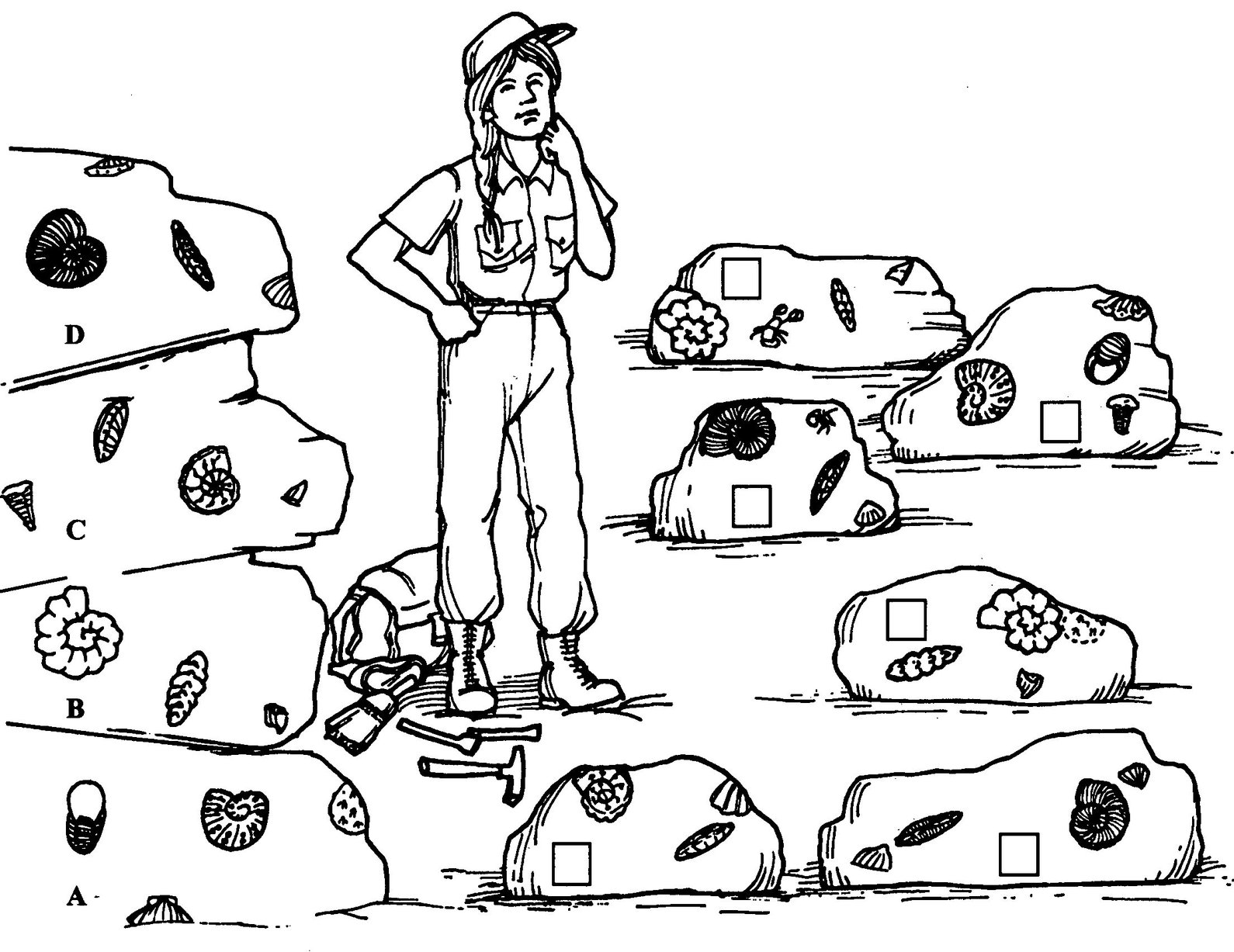Squids in Snails’ Clothing
One group of animals that barely avoided becoming extinct 245 million years ago was the cephalopods. One kind of cephalopod, ammonoids, evolved rapidly after the big extinction.
Ammonoids were relatives of squids and octopuses, but they lived in large, coiled shells. The shells had walls, called septa, that divided the shells into sections. These gas-filled chambers helped the ammonoids to float.

Because ammonoids were very common in all the seas around the world and because they had so many different shapes, they are useful as index fossils. These are fossils that scientists use to identify and date the rocks in which they are found. For example, assume a paleontologist knows that a certain ammonoid species lived 150 million years ago. If she finds that specific ammonoid in a rock layer anywhere in the world, she then knows that the rock layer (and all the other fossils in it) must be 150 million years old, too.
Help this paleontologist put her mixed-up rocks in order. On the left are four different rock layers containing various ammonoid species. The oldest layer is on the bottom; the most recent layer is on the top. On the right are slabs of rocks with various ammonoids and other fossils in them. Decide what layer of rock each slab came from and write the correct letters in the boxes in the slabs. (Hint: Check out the ammonoids.)
